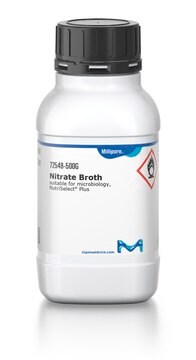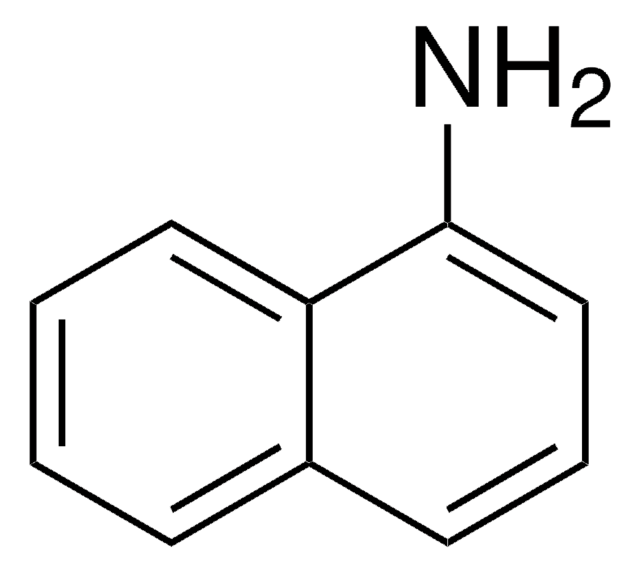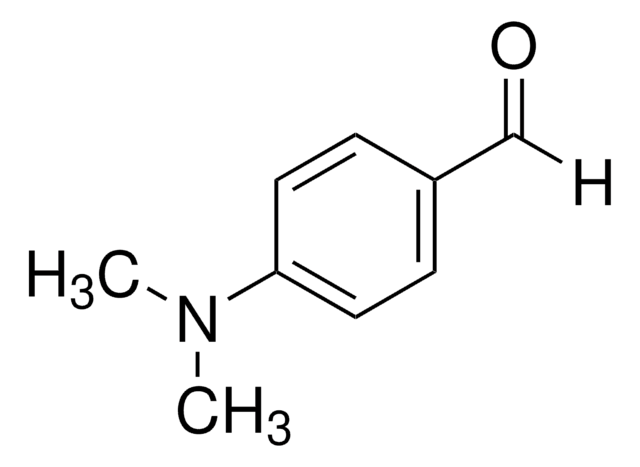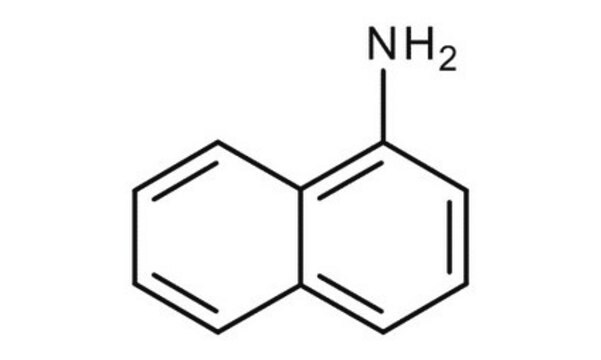Key Documents
38497
Nitrate Reagent A
suitable for microbiology
Synonim(y):
1-Naphthylamine solution
About This Item
Polecane produkty
linia produktu
BioChemika
Poziom jakości
okres trwałości
limited shelf life, expiry date on the label
skład
acetic acid 5 N, 1000 mL
α-naphthylamine, 5 g
metody
microbe id | metabolite detection: suitable
Zastosowanie
agriculture
clinical testing
environmental
food and beverages
pharmaceutical
microbiology
przydatność
Enterobacter spp.
Neisseria spp.
anaerobic bacteria
bacteria
InChI
1S/C10H9N/c11-10-7-3-5-8-4-1-2-6-9(8)10/h1-7H,11H2
Klucz InChI
RUFPHBVGCFYCNW-UHFFFAOYSA-N
Opis ogólny
Hasło ostrzegawcze
Danger
Zwroty wskazujące rodzaj zagrożenia
Zwroty wskazujące środki ostrożności
Klasyfikacja zagrożeń
Eye Dam. 1 - Skin Corr. 1B
Kod klasy składowania
8A - Combustible corrosive hazardous materials
Klasa zagrożenia wodnego (WGK)
WGK 1
Temperatura zapłonu (°F)
Not applicable
Temperatura zapłonu (°C)
Not applicable
Środki ochrony indywidualnej
Faceshields, Gloves, Goggles, type ABEK (EN14387) respirator filter
Wybierz jedną z najnowszych wersji:
Masz już ten produkt?
Dokumenty związane z niedawno zakupionymi produktami zostały zamieszczone w Bibliotece dokumentów.
Klienci oglądali również te produkty
Produkty
Vibrio Detection
Większość wibrysów wykorzystuje proste źródło C, takie jak glukoza, jako źródło energii i wymaga 2-4% NaCl lub innych soli i pierwiastków śladowych obecnych w wodzie morskiej dla optymalnego wzrostu. Niektóre gatunki mogą wykorzystywać różne źródła energii.
On the Trail of Campylobacter
For microbiologists the most fundamental stain was developed in 1884 by the Danish bacteriologist Hans Christian Gram.
Protokoły
US EPA Method 8270 (Appendix IX): GC Analysis of Semivolatiles on Equity®-5 (30 m x 0.25 mm I.D., 0.50 μm)
Nasz zespół naukowców ma doświadczenie we wszystkich obszarach badań, w tym w naukach przyrodniczych, materiałoznawstwie, syntezie chemicznej, chromatografii, analityce i wielu innych dziedzinach.
Skontaktuj się z zespołem ds. pomocy technicznej












